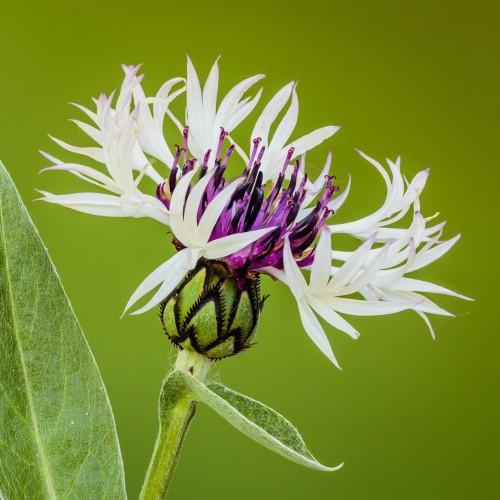
mountain bluet
Centaurea montana 'Amethyst in Snow'
Also Known As - Perennial CornflowerCycle:
Herbaceous Perennial
Watering:
Minimum
Hardiness Zone:
3 - 8
Flowers:
Flowers In Spring
Sun:
Full sun, Part sun/part shade
Soil:
Well-drained
Fruits:
Fruits In Autumn Ready In
Leaf:
Yes
Growth Rate:
Moderate
Maintenance:
Low
Drought Tolerant:
Yes
Salt Tolerant:
Yes
Care Level:
Medium
watering
Mountain bluet (Centaurea montana 'Amethyst in Snow') should be watered deeply, only when the top 1-2 inches of soil is dry. This plant prefers consistent soil moisture, so you should check the soil moisture levels weekly and water when necessary. You should also make sure the soil drains well, as it does not enjoy "wet feet." In order to avoid over-watering, do not water until the soil is completely dry and it may be helpful to an insert a finger into the soil to test moisture levels. During periods of extreme heat, the plant may need more water than usual. During the winter season, this plant will need far less water than normal.
sunlight
Mountain bluet (Centaurea montana 'Amethyst in Snow') grows best in full sun to partial shade, though it will tolerate some shade. It should receive at least 6 hours of direct sunlight each day. It prefers cooler temperatures in full sun, as too much heat or strong direct sunlight can harm the foliage. During the hottest part of the day, a light shade cloth or some other form of protection can be used to protect the delicate blooms and foliage.
pruning
Mountain bluet (Centaurea montana 'Amethyst in Snow') should be pruned in the early spring, before it begins to actively grow in late spring. Cut the plant back by 1-third, removing any dead or damaged stems, as well as any shoots growing in the wrong direction. This will encourage healthy, vigorous flowering. Prune as soon as the blooms have faded for the best results. To keep the plant neat and tidy throughout the growing season, deadhead spent flowers regularly to ensure a profusion of flowers from late spring to early fall.
